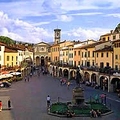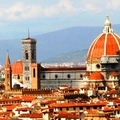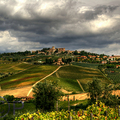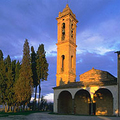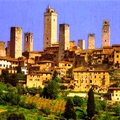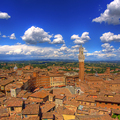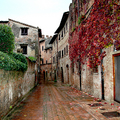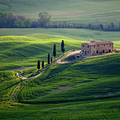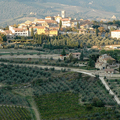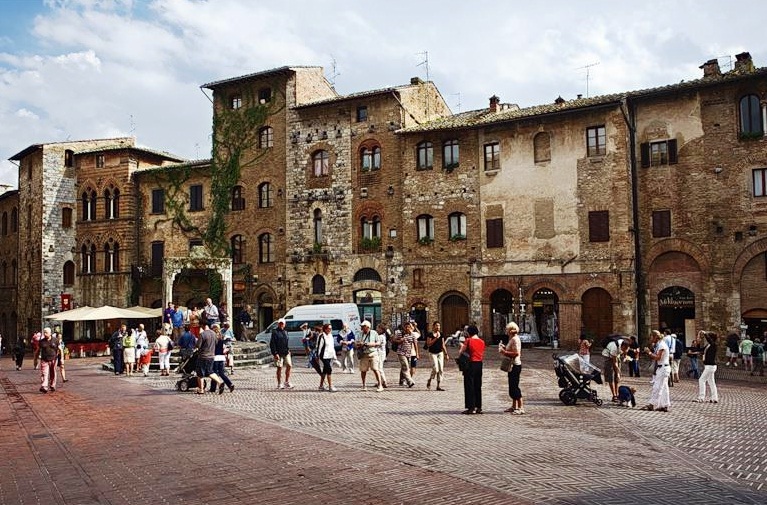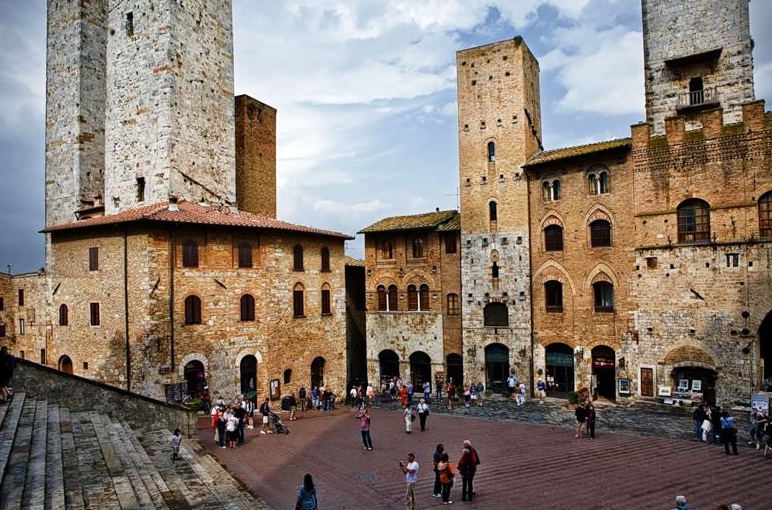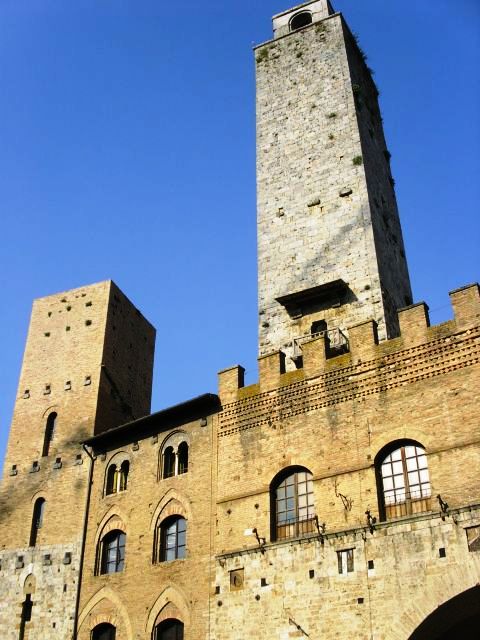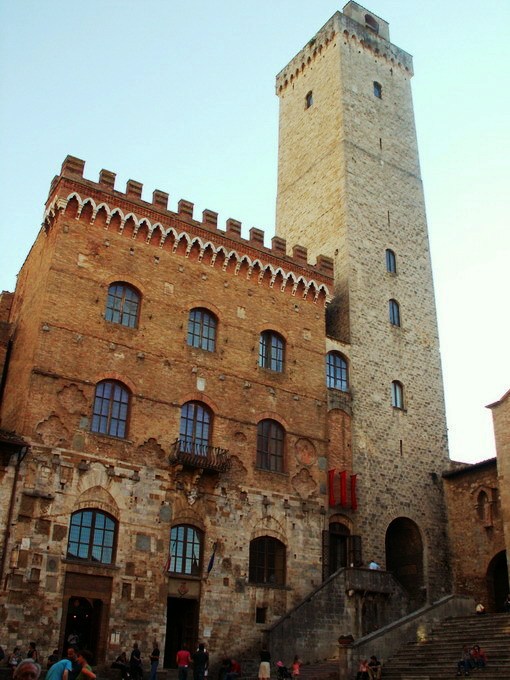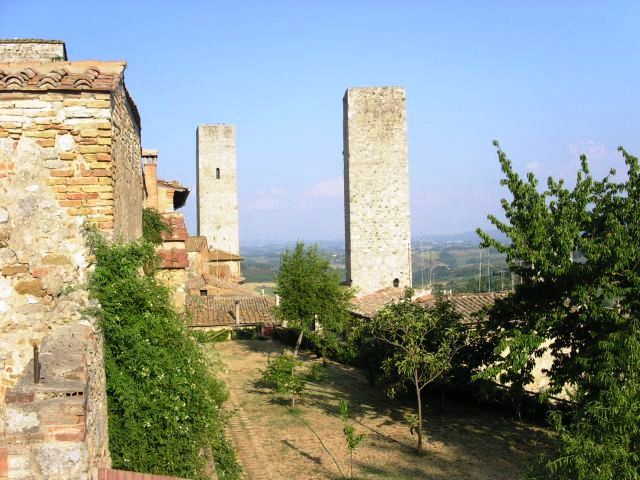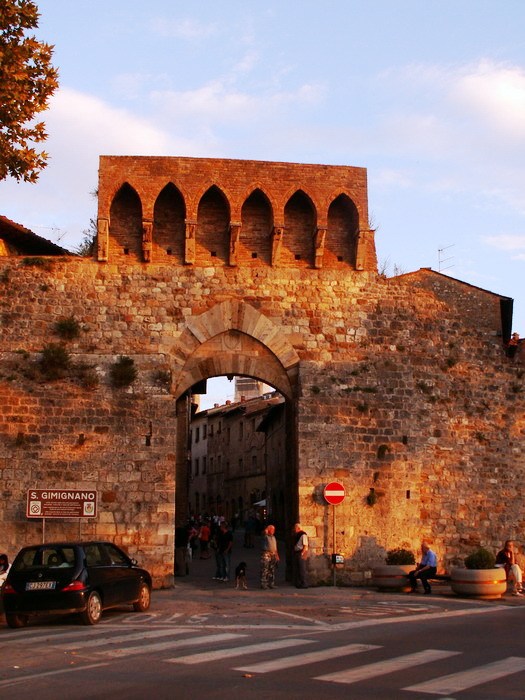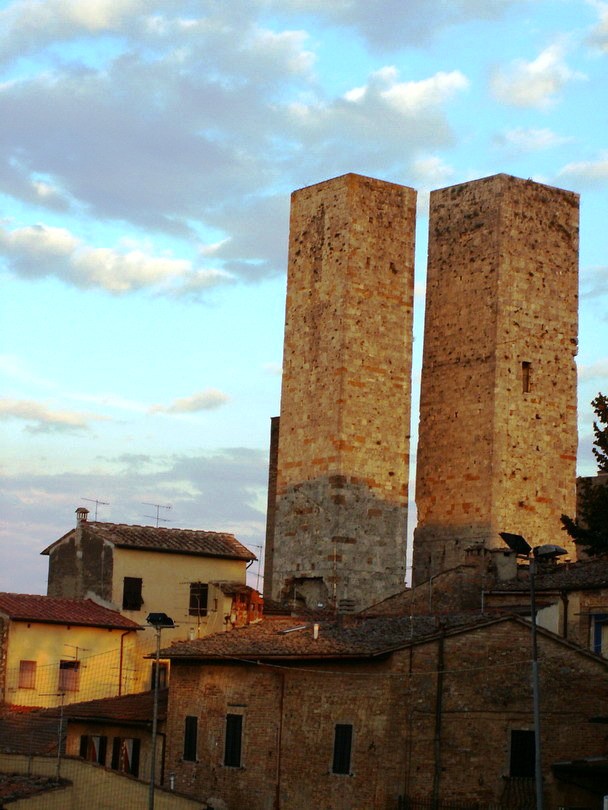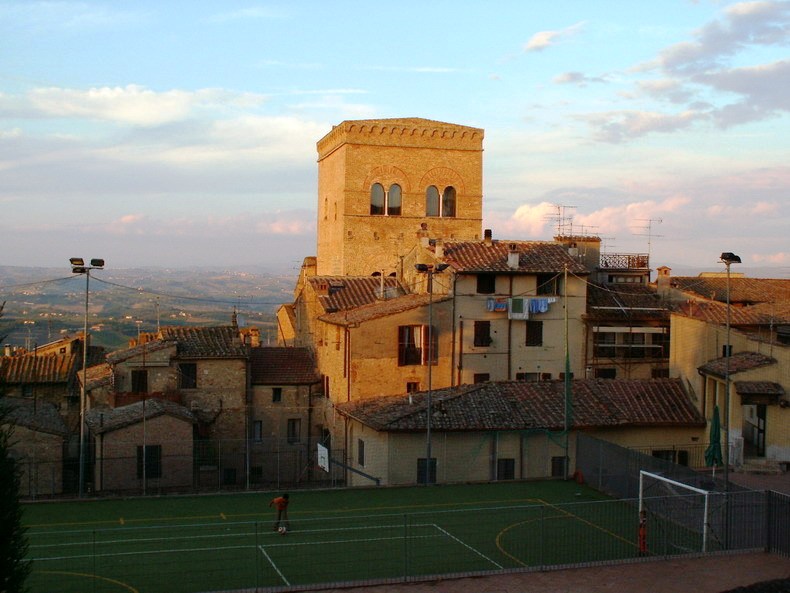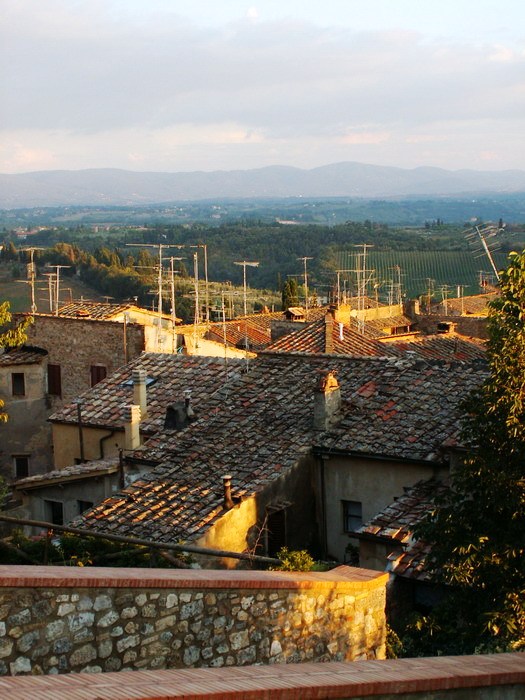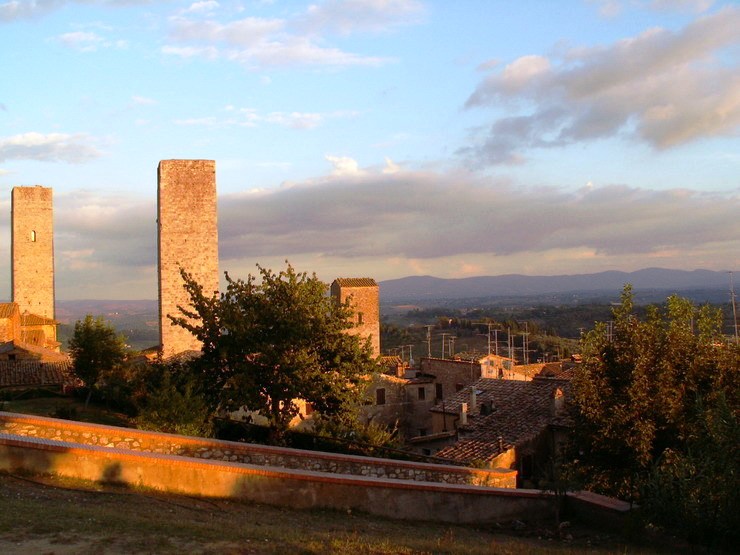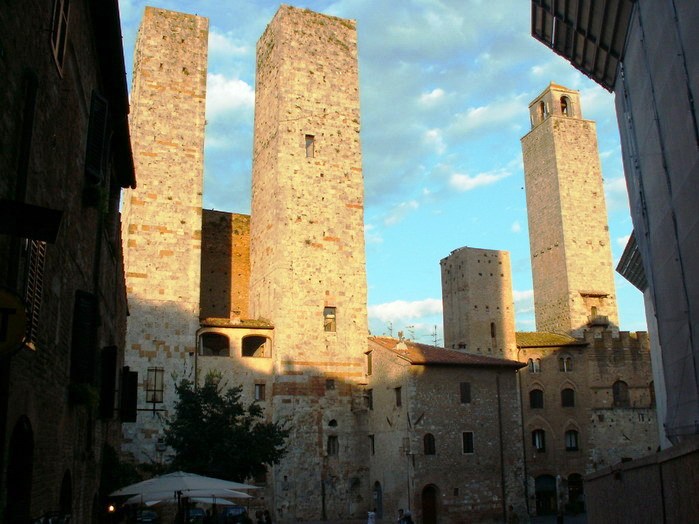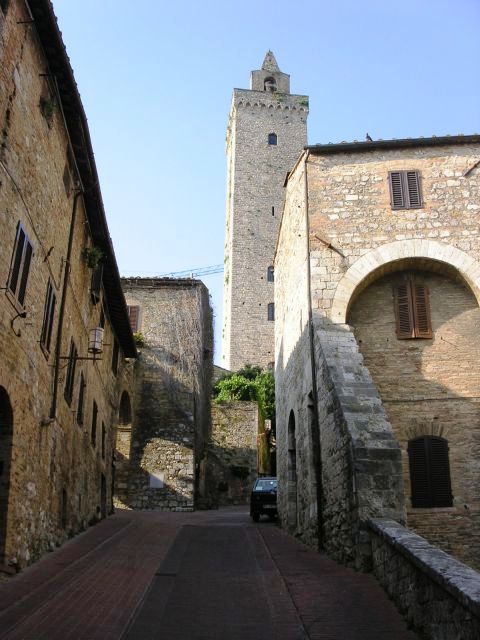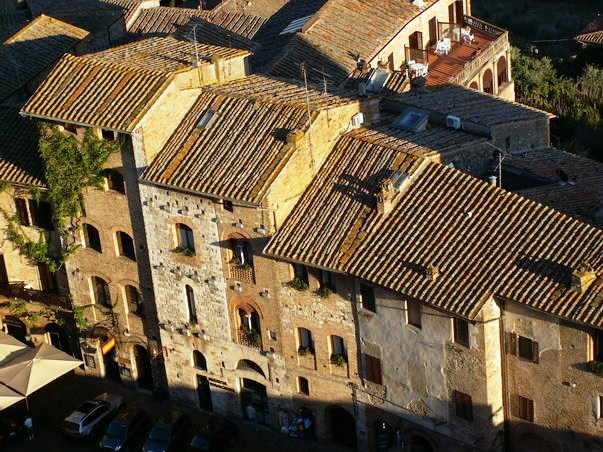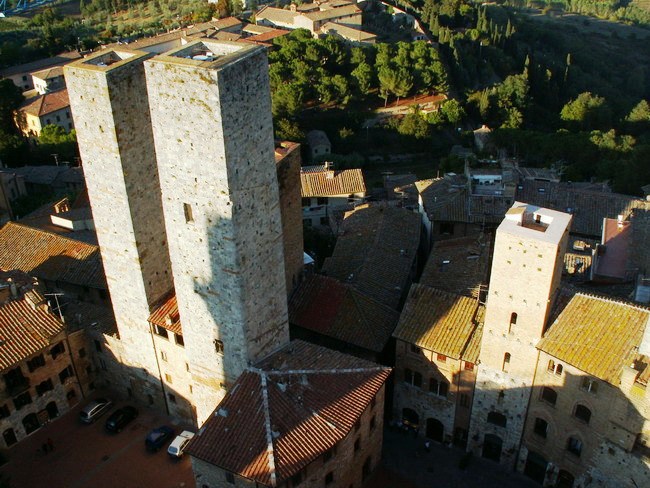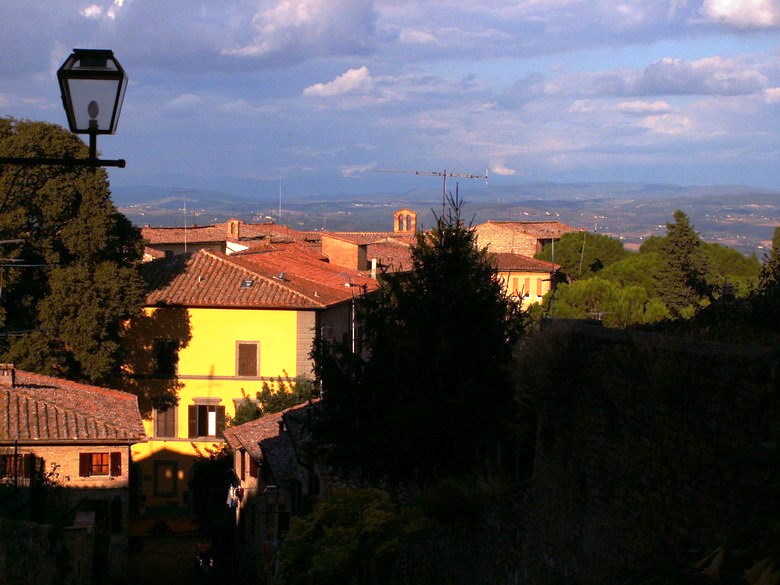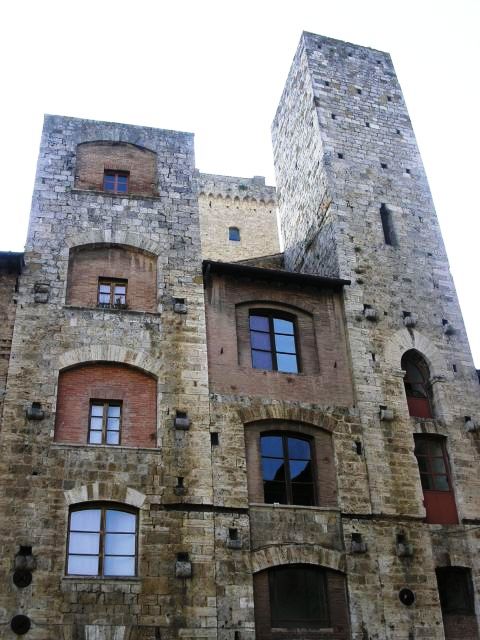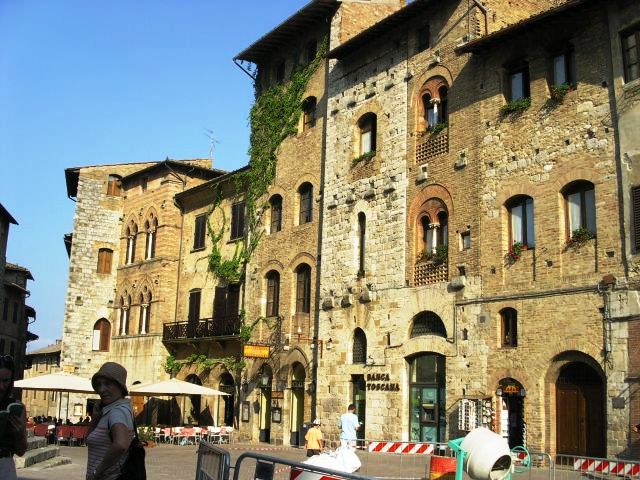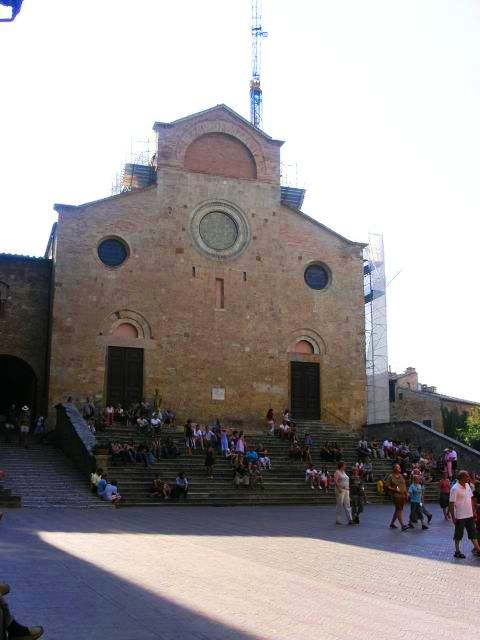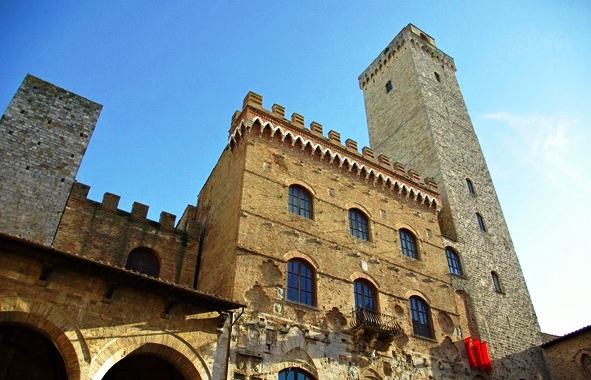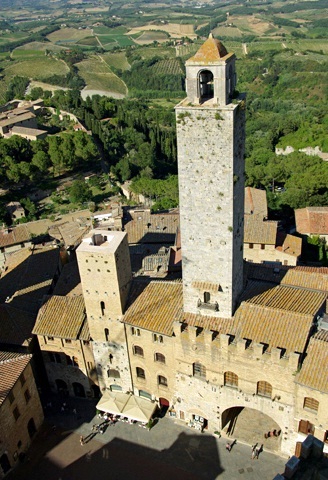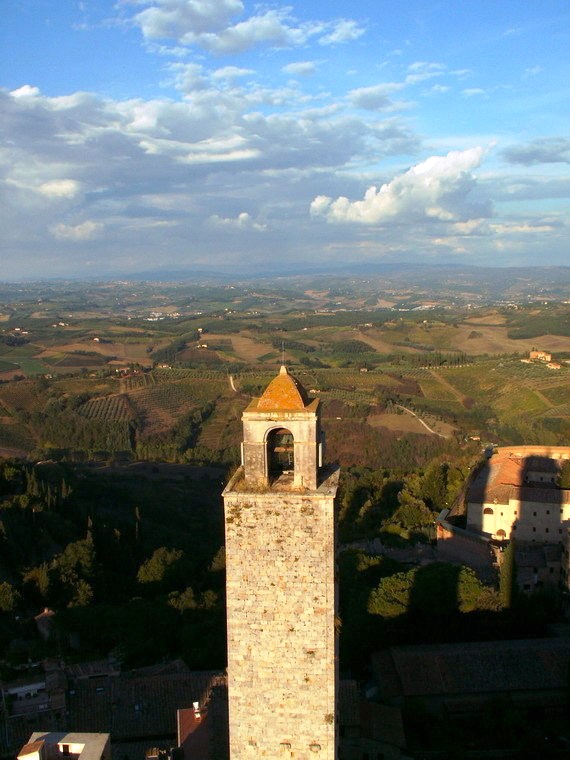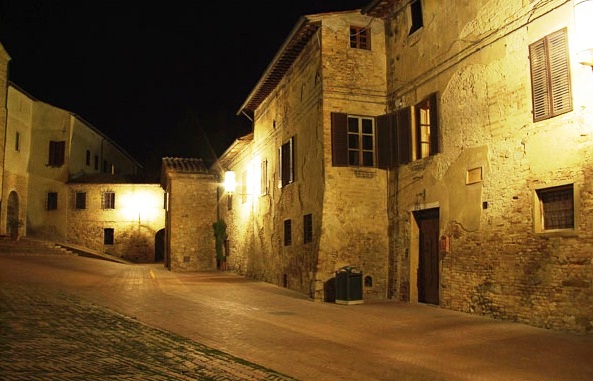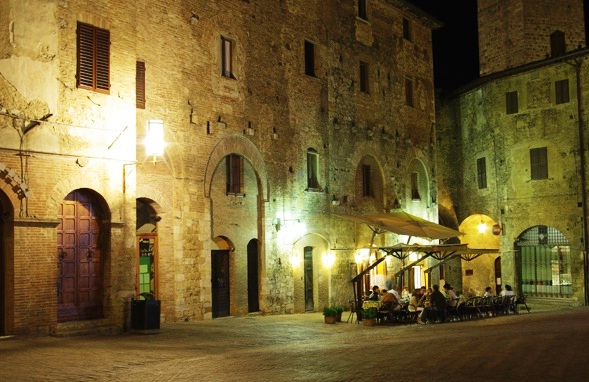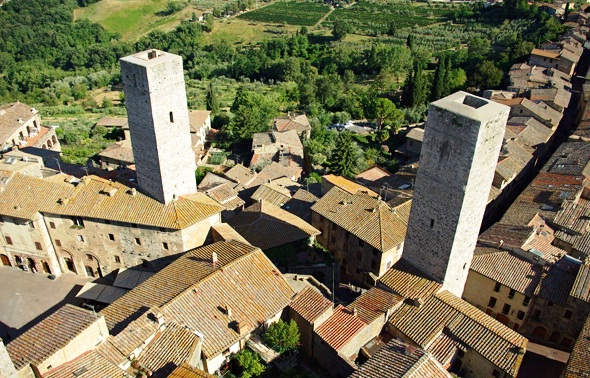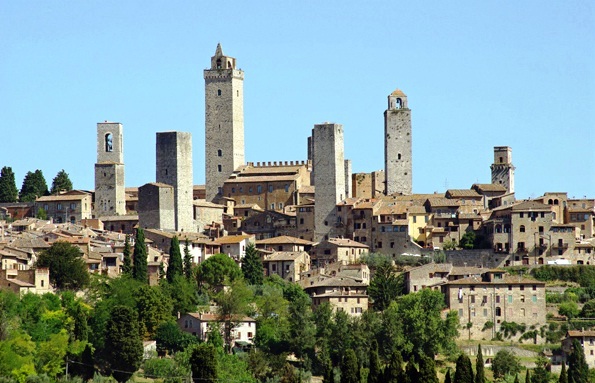About San Gimignano
San Gimignano is a charming hillside town with over 7000 inhabitants, located within the Province of Siena, about halfway between Florence and Siena, at 60 away from the former and 45 km far from the latter, being easily accessible by car and by bus. The town offers a rich past and fascinating architecture. This town maintained intact its medieval architecture more than any other place in Tuscany. Perched atop the hills of the Upper Elsa Valley, facing the Volterra land and located right on one of the most important stretches of the mediaeval Via Francigena, San Gimignano is famous worldwide for its numerous towers, which are to be noticed from a great distance, providing one of the most unforgettable sights in Italy. Walking along the medieval walls, visitors will have the chance to admire the beautiful Tuscan countryside landscape that opens up, with rich agricultural farm land surrounding the town. The town enjoys a great positioning, which, together with the architectural and cultural wealth, delicious local cuisine, the production of excellent white wine and its long history, make it a particularly attractive destination for the travelers wandering through Tuscany. More than 3 million of people from all over the world visit the town yearly, being packed with tourists most of the days. Therefore, it is recommend that you visit the town in the late afternoon, in the evening or early in the morning.
History of San Gimignano
Built atop a hill about 300 meters high, the town enjoys great views of the entire Elsa Valley that surrounds it, dominating the valley with its towers. The hill had been inhabited since ancient times, probably due to the fact that the strategic positioning on high grounds enabled the supervision of the entire valley below, making it easy to control the valley and to defend against the enemies. The town stands on the site of a small Etruscan settlement dating from the Hellenistic period (200-300 BC), according to the archaeological finds, mostly in the form of tombs. Further on, the Romans arrived here and named the city Silvia. The history of San Gimignano began around the 10th century. Historical records dating from this period mention that the city took its name from the canonised Saint Geminianus, a bishop from Modena from the 4th century who is said to have saved the town from Totila’s invading hordes. San Gimignano achieved its greatest prosperity during Medieval times, becoming an important center for trade and for pilgrims travelling to or from Rome on the Via Francigena, due to the fact that Via Francigena passed through the town, which was an important road and pilgrimage route at that time connecting Rome to Canterbury. This enabled a considerable progress in art works, decoration of churches, palaces and monasteries. Numerous merchants, travelers and pilgrims on their way to Rome used to stop here in need of hospitality or requiring assistance. According to the legend, Desiderio, the king of the Lombards, lived here, as well as Charlemagne. Under the jurisdiction of the bishops of Volterra up until the end of 1100, San Gimignano became a free commune in 1199 and this is the beginning of the impressive growth of the town as an urban centre. This is also the time that the city acquires its first podestà. The free town, known as San Gimignano delle Belle Torri, enters a long flourishing period. Becoming a free municipality, it fought against the Bishops of Volterra and the surrounding municipalities. The town was controlled by two major rival families - the Ardinghelli, who were sympathizers of the Guelphs, and the Salvucci, who were Ghibellines. There numerous conflicts between the two clans took place. The internal power struggles led to the division of the town into two factions, one controlled by the Ardinghelli family and the other by the Salvucci family. Despite the conflicts, San Gigimignano managed to continue its economic development, the 12th century registering the period of the highest progress.
Most of the towers were built during this period. The city had over seventy towers, homes which were built by many wealthy families in the town, mostly old merchants and financier aristocracy, as a symbol of their wealth and power. By that time, almost every palace had a tower, which served as a kind of safe for the family, where the fortune used to be stored; it was also the most common form of defense from thieves. Also up there, in the tower, women, children and the elderly would refugee themselves raising the ladder and setting different metal gates and other traps to prevent thieves or attackers from reaching them. Water and food reserves would be kept in times of siege there too. Meanwhile men would fight to defend the city and would return in the tower to rest and be taken cared of. The size and the height of the tower were representative for the family rank. Yet the law forbade that the towers built could exceed in height the Commune tower, called Rognosa. Among them, only 14 towers still stand today, of different heights. Some of them are perfectly preserved, withstanding wars, while others had been demolished when one family prevailed over another. Nowadays, the towers define the city creating a unique skyline which is its international symbol. For this reason, San Gimignano is also called “the Medieval Manhattan”.
San Gimignano was governed by Ghibellines up until 1255, when the Guelphs took over, destroying much of the original walls. However, turning victorious in the famous Battle of Montaperti of 1260, the Ghibellines took over the control over the city, rebuilding and enlarging the city walls. On the 8th of May in 1300, San Gimignano hosted Dante Alighieri in his role as Ambassador for the Guelph League in Tuscany. In 1348, San Gimignano was hit by a terrible plague, causing a subsequent drop in population, decrease in trade and weakening of noble’s power. Due to the deep crisis, the town was unable to fight Florence and the governors of the city declared their submission to Florence in 1353. The city registered a slight political and economic decline, although it managed to develop artistically and culturally during the following centuries. Later on, it followed the rule of Grand Duchy of Tuscany till 1860. It is worth noting that San Gimignano is the birthplace of "Folgore da San Gimignano" (Poet, born in 1270-1332). In spite of the fact that a few centuries have already passed, San Gimignano managed to preserve its medieval architecture and its charm and it can be considered nowadays one of the little gems in Tuscany. The beauty of the town, along with its great cultural and architectural importance, has led to an excellent economic and cultural revival in recent years. The "city of beautiful towers", as it is often referred to, has been declared by UNESCO a World Heritage Site since 1990.
Major attractions of San Gimignano
A walk through the Old City will bring you back in the Middle Ages, with its ancient architecture perfectly preserved. The buildings look rather simple, made of stone or brick, with small windows with shutters –on the overall, the city is very well maintained, clean and functional. The architecture of the city was influenced by Pisa, Siena and Florence, as there can be found 14th century paintings belonging to the Sienese School and 15th century paintings of the Florentine School. The Old City is surrounded by 13th century walls and can be accessed by two main streets that intersect to create two charming piazzas. The town arose around these two principal squares, the Piazza della Cisterna and the Piazza del Duomo. The Piazza della Cisterna is triangular-shaped and is embellished with a delightful well that stands right in the centre. It took the name from the cistern placed inside the square, built in 1237 and enlarged in 1346. The piazza is bordered by tower houses –to the wests there stands the twin towers of the Ardinghellis; to the south there is the tower of the Benuccis, the Casa Rodolfi and the Palazzo Razzi with mullioned windows, while to the north there is the Palazzo dei Cortesi. The Piazza del Duomo dates from the late 13th century and houses the most public and private monuments. It is considered one of the most beautiful smaller piazzas in Italy. To the west, the Collegiata of Santa Maria Assunta dating from the 12th century can be found. To the east, the former palace of the podestà stands surmounted by Rognosa Tower, which has suffered great transformations throughout time; also here, the Torre della Rognosa and the Torre Chigi can be admired. To the south, Palazzo del Popolo with its Torre Grossa, 54 m high is located, facing the twin towers of the Salvucci to the north.
The Duomo or Collegiate Church is situated on the west side of Piazza del Duomo. It is a great example of Romanesque architecture in Tuscany. The church was initially a simple parish church, being transformed into a Propositura in 1056. Later on, in 1148 the Duomo was consecrated by Pope Eugenio III, benefiting from multiple previliges granted by Pope Lucio III. The church finally became a Basilica in 1932. There have been carried out complex restoration and decoration works starting from 1238 up until the end of the 17th century, involving famous artists. Inside the Duomo contains many beautiful frescoes. Among these, the art work of Bartolo di Fredi "Scenes from the Old Testament" along the walls in the left aisle; other frescoes representing "Scenes from the New Testament" originally attributed to Barna da Siena and recently reattributed to "La Bottega dei Memmi" in the right aisle. By the central nave, there can be found two famous wooden statues belonging to Jacopo della Quercia standing on both sides of the fresco representing the "Martyrdom of St. Sebastiano" by Benozzo Gozzoli. Also here, on the upper part, the frescoes of Taddeo di Bartolo illustrating "the Last Judgement" can be admired. Also inside, the famous Chapel of St. Fina dating from 1468 is to be admired. An elegant altar by Benedetto da Maiano and amazing frescoes by Domenico Ghirlandaio adorne the chapel, making it a precious element of the Duomo.
Passing the Dome, visitors can reach the Rocca, a ruined fortress set on high grounds surrounded by luxuriant parks and olive groves, offering a splendid view of the Tuscan panorama. The fortress was built during the period of Florentine domination. To the left of the Piazza di Duomo, Palazzo Publico stands. Palazzo Publico is one of the most ancient public buildings in Tuscany and one of the most important monuments of San Gimignano. Built in the 13th century, the palace has suffered a few enlargements later. Once the seat of the town, it serves today as the Town Council. The palace contains precious paintings belonging to the Florentine and Sienese schools from the 13th century among which the Crucifix by Coppo di Marcovaldo, the triptyches by Niccolo Tegliacci and Taddeo di Bartolo from the 14th century, as well as other 15th century precious works by Domenico Michelino, Pinturicchio and Filippino Lippi. The interior of the palace is embellished with different frescoes, including the "Scenes of private life" by Memmo di Filippuccio and "The Maestŕ" by Lippo Memmi. Since 1853, the second floor of the palace has been transformed into a museum. Palazzo Publico features also the highest tower in the town, Torre Grossa, the "Great Tower" in translation, which was built during 1300-1311. Fifty one meters high, the tower offers breathtaking views of the Tuscan surroundings, scattered by medieval hamlets, olive groves and vineyards.
The town of San Gimignano has several museums as well. Among the most important ones, there are Museo d'Arte Sacra, the one hosted by Palazzo Publico, Cappella di Santa Fina, Museo Archeologico, Galleria d'Arte Moderna e Contemporanea "Raffaele De Grada", Spezieria di Santa Fina (dating from 1253) and Museo Ornitologico. The Museum of Sacred Art was founded in 1930. Its main objective was to preserve intact the materials originating from the dome and ancient convents. The museum exhibits art works dating from the 12th century up to the 19th century such as paintings, sculptures, terracotta ornaments, funeral monuments and precious materials. The most precious works are considered those belonging to Bartolo di Fredi, Benetto da Maiano e Francesco Valdambrino.
Gastronomy
Besides the famous towers, San Gimignano is world famous for the production of wine too. Vernaccia di San Gimignano is one of the most popular white wines produced in Italy, with ancient origins, recently awarded the D.O.C.G., the highest acknowledgement and guarantee for quality in Italian oenology. In addition to wine, another renowned local ingredient is the olive oil produced in San Gimignano. In restaurants and terraces, tourists can taste the local dishes based on mushrooms and truffles. Other dishes are based on the cuisine of the region Sienna. You can taste the traditional desserts such as Pinolata, with cream custard and pine nuts, and you will surely not regret it. There are at least a dozen of restaurants and pubs serving local specialties in the center and as many in the more rural area of the city.
Accommodation
Accommodation can be quite expensive here, yet the medieval atmosphere is worth all the money, in addition. Most accommodation offers are quite simple. You can stay at a farm, you can rent an apartment or find a bed & breakfast-type of room. Hotels are mostly modest, characteristic to a small town. But if you want to stay right in the center of the town, especially during the peak season, prices exceed 100 euro per night. While stay in San Gimignano, you can enjoy daily trips to Siena or Florence or on the farms in the area.
By Maria Morari
Others
The most beautiful places to visit in Chianti area, Italy .
Chianti is a picturesque area in Tuscany, Italy which is worldwide known for its red wine of the same name.
Alike the entire area of Tuscany, Chianti has it all to satisfy the visitor and make him never leave this paradise place, to be mentioned the great wine, delicious dishes, and splendid untainted nature.
Check out the best places to visit in the Chianti area!

